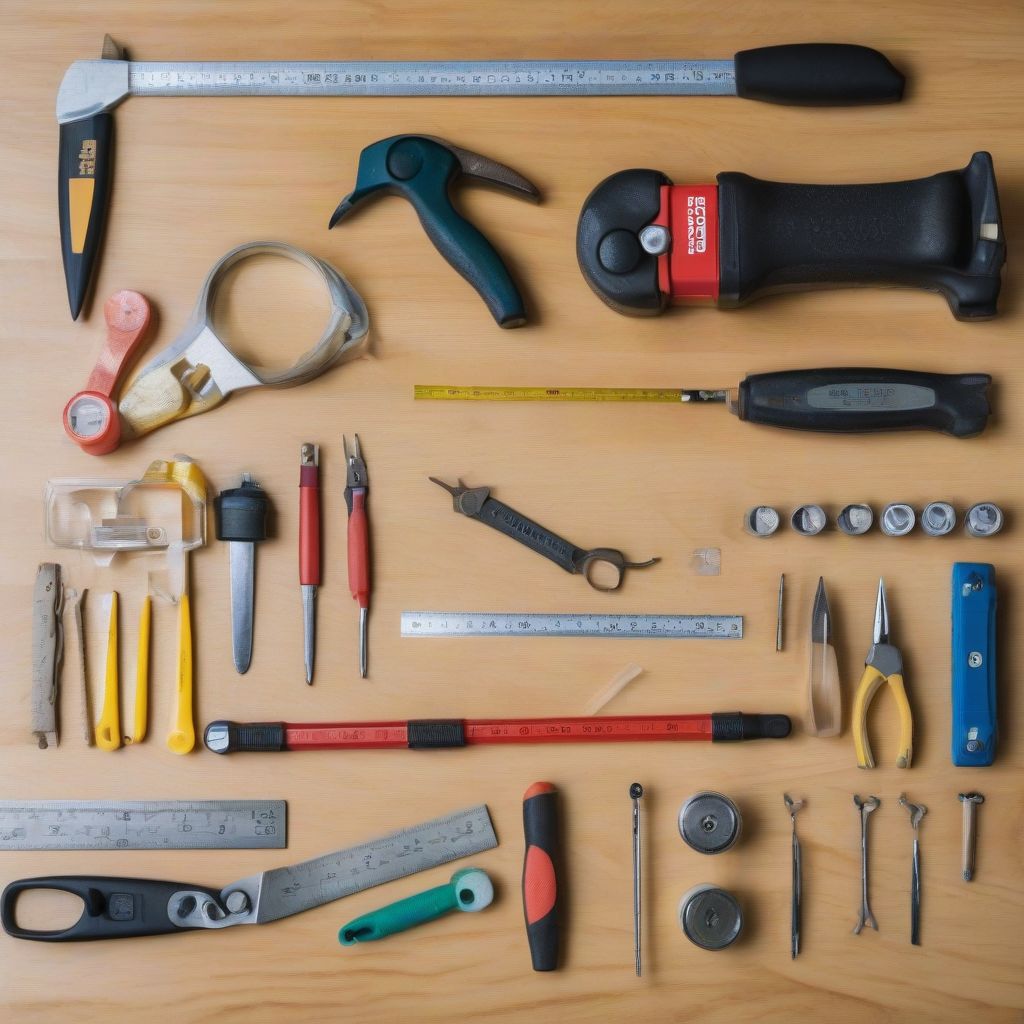Have you ever stood in the middle of a home improvement store, overwhelmed by the sheer volume of tools? It’s a common experience for beginner DIYers. Tackling a project can feel daunting if you’re unsure what you need. Fear not! This guide will equip you with the knowledge to confidently choose the best tools for your DIY journey, saving you time, money, and frustration. Just like a well-stocked pantry is essential for healthy eating, having the right tools is crucial for successful DIY projects.
Essential Hand Tools: Your DIY Foundation
Just as a healthy diet starts with foundational ingredients, your DIY toolkit needs a core set of hand tools. These versatile tools are the backbone of any project, from hanging pictures to assembling furniture.
Screwdrivers: The Unsung Heroes
A good set of screwdrivers is indispensable. You’ll need both Phillips and flathead screwdrivers in various sizes. Consider investing in a multi-bit screwdriver with interchangeable tips; it’s space-saving and convenient. As Bob Vila, home improvement expert, famously said, “A good screwdriver is like a good friend; you can always count on it.”
Hammer Time: More Than Just Nails
A claw hammer is another must-have. Choose one with a comfortable grip and a balanced weight. It’s not just for driving nails; the claw is perfect for removing them and prying apart materials.
Measuring Up: Precision is Key
Accurate measurements are crucial in DIY. A retractable tape measure, at least 25 feet long, is essential. A combination square is also handy for marking 45 and 90-degree angles. “Measure twice, cut once” is a DIY mantra for a reason!
Power Up Your Projects: Essential Power Tools
While hand tools provide a solid foundation, power tools can significantly speed up your projects and expand your DIY capabilities.
The Driller Killer: Your Go-To Power Tool
A cordless drill is arguably the most versatile power tool. From drilling pilot holes to driving screws, it’s a DIY workhorse. Opt for a model with variable speed settings and a good battery life.
Cutting Edge Technology: Saws for Every Need
Depending on your projects, you might need a saw. A handsaw is great for basic cuts, while a jigsaw offers more maneuverability for curved cuts. For larger projects, a circular saw is invaluable. Remember safety first: always wear appropriate safety glasses and follow the manufacturer’s instructions.
Sanding Smooth: The Finishing Touch
A random orbital sander is a great addition for smoothing surfaces and preparing them for painting or staining. It’s much faster and more efficient than sanding by hand.
Beyond the Basics: Expanding Your Toolkit
Once you’ve mastered the basics, you might want to consider adding these tools to your collection.
The Multi-Tool Marvel: A DIY Swiss Army Knife
Oscillating multi-tools are incredibly versatile, capable of sanding, cutting, scraping, and more. They’re perfect for detailed work and tight spaces.
Leveling the Playing Field: Ensuring Accuracy
A level is essential for hanging shelves, installing cabinets, and other projects requiring precise alignment. A torpedo level is compact and great for small spaces, while a longer level is ideal for larger surfaces.
Clamping Down: Holding it Together
Clamps are essential for holding materials together while glue dries or when assembling projects. Spring clamps are handy for quick tasks, while bar clamps provide more clamping force for larger projects.
Safety First: Protecting Yourself
Just as a balanced diet nourishes your body, proper safety practices protect you during DIY projects.
Eye Protection: Shielding Your Sight
Safety glasses are non-negotiable when working with power tools or any project that could produce flying debris.
Hearing Protection: Safeguarding Your Ears
Loud power tools can damage your hearing over time. Invest in earplugs or earmuffs to protect your ears.
Hand Protection: Keeping Your Grip
Work gloves protect your hands from splinters, cuts, and blisters. Choose gloves appropriate for the task at hand.
 Essential DIY Tools
Essential DIY Tools
Building Your DIY Confidence: Tips for Beginners
Don’t be afraid to start small. Choose beginner-friendly projects to build your skills and confidence. There are countless online resources and tutorials available to guide you. Remember, DIY is a journey, not a destination. Enjoy the process of learning and creating!
Conclusion: Empowering Your DIY Journey
Having the right tools is the first step towards a successful DIY journey. By investing in these essential tools, you’ll be well-equipped to tackle a variety of projects, from simple repairs to more complex renovations. Remember to prioritize safety, start with manageable projects, and enjoy the process of learning and creating. So, gather your tools, embrace your inner DIYer, and start building! What projects are you most excited to tackle with your new toolkit? Share your DIY dreams in the comments below!



